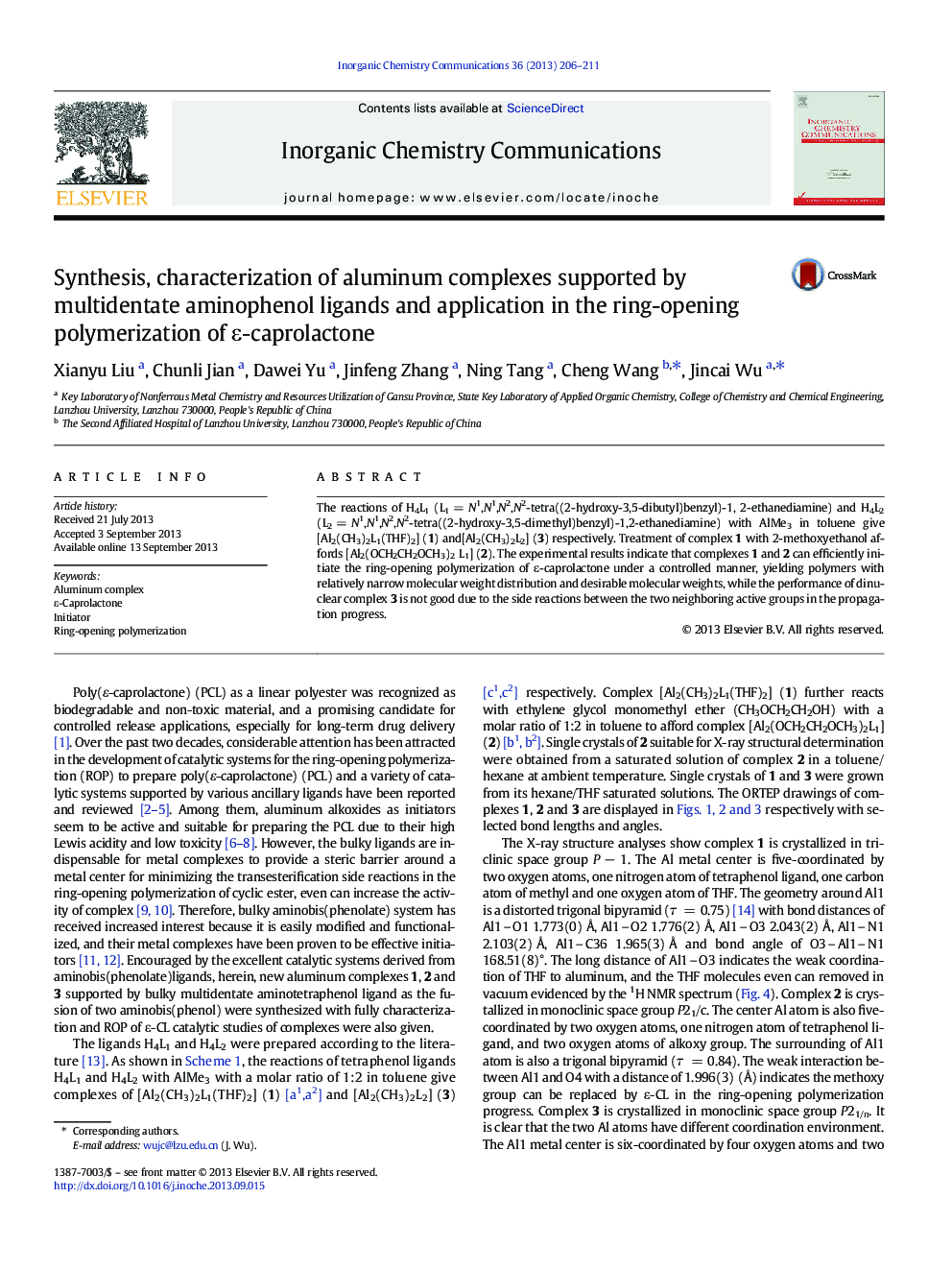| Article ID | Journal | Published Year | Pages | File Type |
|---|---|---|---|---|
| 1301940 | Inorganic Chemistry Communications | 2013 | 6 Pages |
•Aluminum Complexes 1, 2 and 3 have been prepared and fully characterized.•Complexes 1, 2 and 3 were supported by multidentate aminophenol ligand.•Fine crystals 1, 2 and 3 were obtained by crystallization from hex./THF or hex. /tol.•Complexes 1 and 2 catalyze the polymerization of ε-CL with “living” characters.
The reactions of H4L1 (L1 = N1,N1,N2,N2-tetra((2-hydroxy-3,5-dibutyl)benzyl)-1, 2-ethanediamine) and H4L2 (L2 = N1,N1,N2,N2-tetra((2-hydroxy-3,5-dimethyl)benzyl)-1,2-ethanediamine) with AlMe3 in toluene give [Al2(CH3)2L1(THF)2] (1) and[Al2(CH3)2L2] (3) respectively. Treatment of complex 1 with 2-methoxyethanol affords [Al2(OCH2CH2OCH3)2 L1] (2). The experimental results indicate that complexes 1 and 2 can efficiently initiate the ring-opening polymerization of ε-caprolactone under a controlled manner, yielding polymers with relatively narrow molecular weight distribution and desirable molecular weights, while the performance of dinuclear complex 3 is not good due to the side reactions between the two neighboring active groups in the propagation progress.
Graphical abstractThe reaction of H4L1 (L1 = N1,N1,N2,N2-tetra((2-hydroxy-3,5-dibutyl)benzyl)-1,2-ethanediamine) with AlMe3 in toluene give [Al2(CH3)2L1(THF)2] (1). The experimental results indicate that complexes 1 efficiently initiate the ring-opening polymerization of ε-Caprolactone under a controlled manner, yielding polymers with relatively narrow molecular weight distribution and desirable molecular weights.Figure optionsDownload full-size imageDownload as PowerPoint slide
